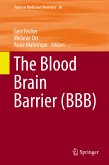This volume will first review existing cholinesterase inhibitors prescribed for Alzheimer's disease (AD) patients followed by some target mechanisms with ongoing clinical trials. It offers a glimpse of what our future medicine cabinets may look like for AD patients. This volume is part of a series that covers hot topics of frontier research summarized by reputed scientists in the field.
Dieser Download kann aus rechtlichen Gründen nur mit Rechnungsadresse in A, B, BG, CY, CZ, D, DK, EW, E, FIN, F, GR, HR, H, IRL, I, LT, L, LR, M, NL, PL, P, R, S, SLO, SK ausgeliefert werden.









